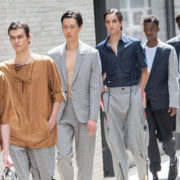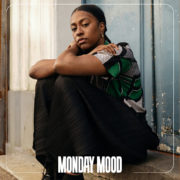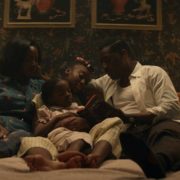The dichotomy between interest and access within Men’s Fashion

By Kwoli Black
With the rise of social media and influencer culture, we have seen more and more men begin to take part in fashion and styling and yet, despite this the fashion industry hasn’t responded in kind.
Fashion’s mercurial nature continues to evolve and permeate through social spheres of all generations. It can be both exciting and frustrating. From the ever changing styles and trends to the fluctuating prices and limiting ranges, fashion remains a prominent constant. Nowadays fashion finds itself firmly planted on social media channels across the globe from Instagram to Twitter and even the newly viral TikTok app, which has amassed its own fashion facing side of video content.
For the most part, womenswear is able to appeal to and satisfy the needs of the majority of its market, menswear however…not so much.
Men have shown on social media, music and even in sports that they too enjoy the expression fashion provides. The freedom and ability to establish an identity and yet, the fashion industry and many brands have failed to satisfy the needs of a growing community. Male influencers are popping up at a rapid rate and for decades male artists have shown some of the most exciting looks and styles in their respective fields. So why is it that so many of us feel as though the industry offers us very little attention? There is a dichotomy between the growing interest in men’s fashion and the access to it; more specifically the pricing and range.
Celebrities and influencers aside, menswear is substantially more expensive for the everyday person, perhaps a factor that is contributed to by the quality of clothing. Fast fashion is a cheaper alternative but is lacking in quality, so clearly, that isn’t the solution, although it begs the question what is?
Menswear is made with better quality, however, with the increasing interest and desire for men to have a whack at dressing to express, how long will they have to fork out a couple bags each and every time they want a new outfit? Not two or three outfits…one. A plain t-shirt on ASOS for example is comparatively different in price in menswear and womenswear. Of course £20 compared to £15 isn’t the wildest price difference, but that is just the beginning of the disparity.
Most everyday men don’t shop that often, In fact a survey carried out showed that 80% of men claim to shop at most, once a month in order to not spend too much. 40% of participants claim to have bought their last item over a month ago, 53% of men believe the range of styles and clothing available for men is decent at best and needs work and 80% believe that men’s clothing is overpriced.



Rebuttals could arise such as men being to blame for the price of their clothing. With some claiming that men shop less and have historically seen fashion as something feminine and so there is less turnover of styles, and the quality of their clothing can be higher – ultimately leading to a higher selling price. Hmm, fair, but not entirely the full truth. Men have always played a part in fashion, and showed a distinct interest and fondness for it. Most owners and creators of huge fashion houses have cited women as being their biggest source for inspiration and creativity.
Undeniably so, women have been incredibly pivotal in the development and creation of trends and expression, but in another vein, many men have also played parts in creating and even in setting trends. Celebrities have always been fashion forward and inspired the everyday man to express themselves through their clothing. In fact, we only need to go back a few decades to the 70s and 80s to see how expressive and vibrant men have been in their style, so perhaps this limit is a recent phenomenon.
But I digress, it is evident that the fashion industry needs to find a way to make men’s clothing, more accessible to the (not so) average joe. Based on the survey linked above, brands may see that with the prices of their menswear being more affordable, more spending could occur, therefore offsetting the potential effects of a price reduction across the board.
Men have collectively stated that the fashion industry has done a pretty average job of reflecting the growing interest in men’s fashion, and 53% of men have felt limited in their expression. Generally men’s fashion has no huge concepts. It was deemed in the past that most menswear was based off of tailoring, military outfits and sports/leisure wear. That men kept up with fashion less and cared not for their figure but for functionality.
However, this is simply no longer the case, and while there have been some attempts to be inclusive (plus size lines), there is still a lot of work to be done. Men of shorter or slimmer stature need to be catered to, as well as those with more expressive inclinations. Admittedly there is a variety of patterns and more colour is being included in menswear, but styles still remain largely the same with little variation.
Perhaps men really are to blame. It is undeniable that men of the past gave little attention to fashion, but times change. With the likes of Wisdom Kaye (@WISDM) and Obed Dagnon (@Obeddagger), leading the charge for expressive male fashion, perhaps we will see more and more men being liberated to take charge of their own fashion journeys and just maybe, the fashion industry will answer in kind. In truth men’s fashion is slowly becoming more expressive, slowly it is changing, to quote Wisdom Kaye, at “the same speed as earth’s tectonic plates”; but I guess slow progress is still progress. Of course a periwinkle waistcoat or floral pattern viscose shirt isn’t for everyone, but fashion should be.
Discover more from GUAP’s Fashion section here

